Upon arrival at the Windhoek International Airport take possession of your car and drive 23 km to Voigtland Guesthouse for your first night. Relax after the long flight and enjoy a Sundowner cocktail while watching the sun set in the west.
Voigtland Guesthouse is delightfully different and combines an atmosphere of old world charm with a unique modern style. Originally built around 1900, the house is set on the slopes of a hill in a spacious landscape of trees, lawns and gardens. Elegant decor is combined with African and European furnishings. Spacious living & dining rooms reflect the history of the House.
Voigtland is only a 30 min. drive from the capital city Windhoek towards the airport. The Guesthouse is ideally located to start and end your holidays, and the perfect place to begin disconnect and reconnect with nature.
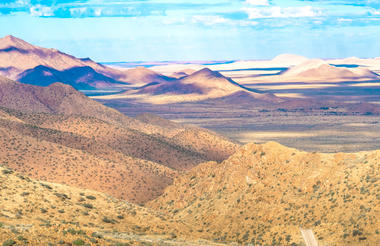


Your adventure commences as you set your bearings south and travel trough the endless open plains along the edges of the Kalahari. passing through the towns of Mariental and Maltahöhe you reach Burgsdorf Guest Farm in the early afternoon. Settle in and then enjoy an extensive walk along the hiking trails Burgsdorf offers.
The next day undertake a farm drive to learn about the activities of working farm, while the afternoon is dedicated to a game drive in Burgsdorf's own reserve. This is a perfect time to try out a bit of digital detox using our phone only as a camera and communicating with your loved ones only in the evening.



Hiking Trails
Hang Gliding
Farm Drive
Your rediscovery of nature continues as Ababis Guest Farm awaits you. Cruising between the Great Escarpment and the edges of the Namib desert you will reach your destination in the afternoon.
Ababis Guest Farm is located at the foot of the Naukluft mountains. The Naukluft is a paradise for hiking. There are also exciting hiking trails on the farm. We provide a large number of well marked and maintained trails. For example, you can hike our local mountain, the Zipfelberg, and enjoy the magnificent view over the savannah and its surrounding mountains. Other activities, such as Horse riding, trekking-tours, sightseeing flights and balloon rides are possible in the neighbourhood. We are pleased to organise this for you.
The next morning drive to Sossusvlei. visit Dune 45, which you have the opportunity to climb and enjoy the unfolding panorama around you. Take a leisurely walk to dead vlei to marvel at the age-old dead tree trunks on the white lake floor and surrounded by the worlds biggest sand dunes. On your way visit the Sesriem Canyon, a 36 metre-deep gorge cut into the limestone conglomerate. the afternoon is at leisure to relax at the pool from the morning activities.
This is second opportunity to exercise some digital detox. Wi-Fi is only available in the reception area. So you can truly relax in your room.
And you are kindly asked, not bring your electronic devices with you to the common meals.


4x4 Driving Academy
Hiking trails
Farm drive
Drive to the coast and Swakopmund via the Moon Landscape, traversing the Namib desert from east to west. Spend the afternoon exploring the town and sip a cocktail for Sundowner watching the sunset over the Atlantic Ocean.
The next days you have a plethora of choices for activities to undertake: Kayaking in the lagoon of Walvis Bay with seals around you and dolphins, a dolphin cruise together with a 4x4 excursion to Sandwich Harbour, sand boarding, or quad biking, hang gliding, camel and/or horse riding, If you are socially orientated undertake a township tour in Mondesa, for the ecologically interested the Living Desert excursion offers a fascinating insight into the desert ecosystem and if you are an aeronautic enthusiast there are flights to Sossusvlei and the southern Namib, flips over the Skeleton Coast. or hot air ballooning. For adrenaline junkies tandem skydiving over the coastal desert is on offer.
in the evening try out one of the many fine restaurants for superb seafood platters.
The Namib is a coastal desert. The name Namib means "vast place". According to the broadest definition, the Namib stretches for more than 2,000 kilometres (1,200 mi) along the Atlantic coasts of Angola, Namibia, and South Africa, extending southward from the Carunjamba River in Angola, through Namibia and to the Olifants River in Western Cape, South Africa. The Namib's northernmost portion, which extends 450 kilometres (280 mi) from the Angola-Namibia border, is known as Moçâmedes Desert, while its southern portion approaches the neighbouring Kalahari Desert. From the Atlantic coast eastward, the Namib gradually ascends in elevation, reaching up to 200 kilometres (120 mi) inland to the foot of the Great Escarpment. Annual precipitation ranges from 2 millimetres (0.079 in) in the most arid regions to 200 millimetres (7.9 in) at the escarpment, making the Namib the only true desert in southern Africa. Having endured arid or semi-arid conditions for roughly 55–80 million years, the Namib may be the oldest desert in the world and contains some of the world's driest regions, with only western South America's Atacama Desert to challenge it for age and aridity benchmarks.



The morning is dedicated to the discovery of the Cape Cross Seal Reserve. Stop over and stretch your legs at the Zeila shipwreck, an abandoned fish trawler that was transported here by the Benguela current during a fierce storm. The reserve is found 50 km north of Henties Bay.
Cape Cross has both historic and biological significance and is a popular tourist attraction. The Portuguese navigator, Diego Cão, landed here in 1486 on his second expedition south of the equator and planted a stone cross (padrão) to mark his journey. This reserve is a sanctuary for the world’s largest breeding colony of Cape fur seals, with up to 210 000 seals present during the breeding season in November and December.
Continue your journey to Ai-Aiba Rock Painting Lodge crossing the desert from west to east and passing the landmark of the Spitzkoppe massif, with arrival in the later afternoon.
The entire next day i spent with the resident San community at the San Living Museum nearby. Learn about their survival skills in the bush, the art of making strings for nets and the expertise of making bows and arrows. The afternoon is filled with games and dances, crowned by the famous healing dance of the San.



From Ai-Aiba Rock Painting Lodge drive to Bambatsi Guest Farm. Check in and relax until in the afternoon you visit Vingerklip nearby. The Vingerklip is the geological leftover of a Ugab Terrace, its geological history can be read like an open book when looking at the layers of conglomerate. The Rock Finger stand on a hill top and has a height of 929 m above sea level, the rock itself is 35 metres high. Visitors are allowed to climb the hill to view the rock formation, but it is prohibited to climb the Vingerklip.
The next day is dedicated to explore the rock engravings at Twyfelfontein. The valley has been inhabited by stone-age hunter-gatherers of the Wilton stone age culture group since approximately 6,000 years ago. They made most of the engravings and probably all the paintings. 2,000 to 2,500 years ago the Khoikhoi, an ethnic group related to the San (Bushmen), occupied the valley, then known under its Damara/Nama name ǀUi-ǁAis (jumping waterhole).
Next on the list are the Burnt Mountain and the Organ Pipes and the Damara Living Museum.
The Burnt Mountain is a hill with a solidified lava flow at the foot of a 12-kilometre-long volcanic ridge in Damaraland in northern Namibia. The 80-million-year-old stream of lava was formed by thermal and compression metamorphism and its red, brown, cream and purple colours creates a striking contrast at dusk with the surrounding 200-million-year-old beige rocks of Karoo slate. During the contact metamorphism that was caused by the intrusion, volatile organic components were driven off from the shale, leaving a charred black, clinker like burnt mass from which the mountain got its name.
The Organ Pipes were formed about 150 million years ago as the result of the intrusion of liquid lava into a slate rock formation, which was exposed over time by erosion. They are a rock formation that comprises a group of columnar basalts which resemble organ pipes.
Return in the later afternoon and enjoy a well-deserved sundowner on the veranda.

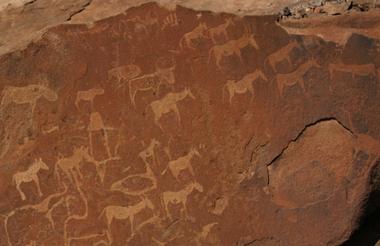

Continue your journey to the Etosha National Park, to undertake your first game drive until sunset. After dinner sit down at the illuminated waterhole and watch as the nocturnal spectacle unfolds before you. The Okaukuejo waterhole is famous for the black rhino that frequent it at night to quench their thirst. Solitary elephants join in and assemble for their nightly silent rendezvous.
Etosha owes its unique landscape to the Etosha Pan, a vast, shallow chalky-white depression of approximately 5000 sq.km that forms the heart of the park. Once a large inland lake fed by rivers from the north and east, it dried up 120 million years ago as continental drift changed the slope of the land and the course of the tributaries. A series of waterholes along the southern edge of the pan guarantee rewarding and often spectacular game viewing.
Of the 114 mammals species found in the park, several are rare and endangered, such as black rhino and cheetah, and the lesser-known black-faced impala, which is endemic to north-western Namibia and south-western Angola. Etosha’s current population of black rhino represents one of the largest growing populations of black rhino in the world. Other large mammals in the park include elephant, giraffe, blue wildebeest, mountain and plains zebra, hyena and lion. Cheetah and leopard complete the trio of ‘big cats’. Antelope species range from kudu, gemsbok, and the large and stately eland, to the diminutive Damara dik-dik. Smaller mammals include jackal, bat-eared fox, honey badger, warthog, and the ubiquitous ground squirrel.
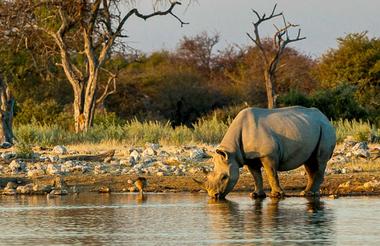
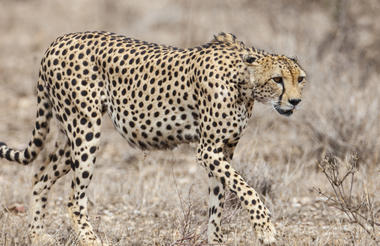
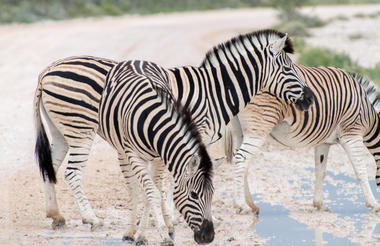
Spend another day in paradise as you transfer from Okaukuejo to the eastern part of the park and Namutoni. Spend the whole day game viewing. With sunset check in at Namutoni Rest Camp and enjoy a well-deserved sundowner on the veranda of the restaurant.
Namutoni was originally established as a control post during the mad cow disease (BSE) epidemic of 1897 in Namibia. The fort was built be the German Schutztruppe from 1902-03 and rebuilt in 1906 after the Ovambo destroyed the original building. The fort served as a police post and later as a South African army base. Fort Namutoni was declared a national monument in 1950 and was opened to tourism in 1957.

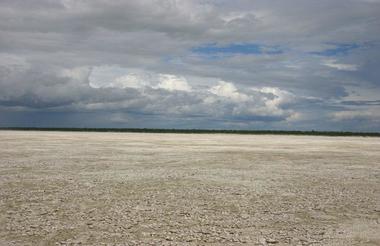

Expulsion from Garden Eden, but not before you have undertaken your last game drive in the park. Today you leave for Waterberg Guest Farm at the foothills of the Waterberg table mountain. En route visit the Otjikoto Lake, an ancient sinkhole in the surrounding dolomitic rock formation. In Tsumeb you have the opportunity to visit the interesting mine museum exhibiting all all the 215 different minerals found in the now abandoned Tsumeb copper mine.
Arrive at Waterberg Guest Farm in the afternoon, settle in and relax near the pool side.
The next day you have the opportunity to undertake a farm drive that will take you to the Cheetah Conservation Fund, where can gain an insight into the scientific conservation efforts to save this endangered species from extinction.
Founded in Namibia in 1990, Cheetah Conservation Fund (CCF) is dedicated to saving the cheetah in the wild. Cheetah Conservation Fund’s holistic conservation strategy is the key to success in saving the cheetah and its ecosystem. CCF works to develop best practices that benefit the entire ecosystem upon which the cheetah depends. CCF’s programs address the concerns for wildlife populations and the human communities that share the landscape.



Farm Drive & visit to Cheetah Conservation Fund
Sadly, all things come to an end and so today you depart to the airport for your return flight back home.



